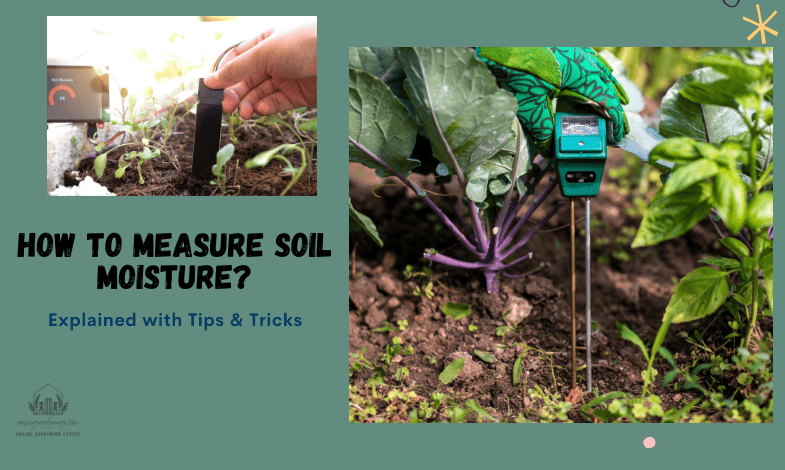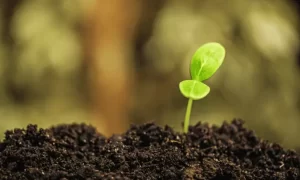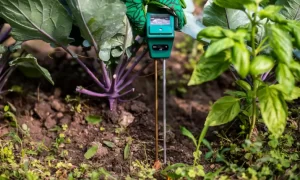How to Measure Soil Moisture: Obtain the Best Performance: Moisture is the amount of water stored in the interstices or crevices of a substrate. But how to measure soil moisture, or how does measuring soil moisture affect its profitability? It is a fundamental variable in the agricultural sector. For example, this water serves as a solvent for the transport of the nutrients that plants need to grow. But it also contributes to regulating soil temperature. In the meantime, it favors the development of microorganisms that are beneficial to crops, such as those responsible for fixing nitrogen.
However, to determine whether its quantity is ideal and to decide whether an extra supply through irrigation is necessary, it is advisable to rely on precise monitoring systems. The information conveyed by the sense of touch on contact with the soil is an accepted and proven method. But it requires experience to obtain valid results.
Contents
- How to Measure Soil Moisture?
- Measuring Soil Moisture
- What are the Three Ways to Measure Soil Moisture?
- Why is it Advisable to Measure Soil Moisture?
- Final Thoughts: How to Measure Soil Moisture?
- How do you Measure Soil Moisture Content?
- What are the Three Ways to Measure Soil Moisture?
- Which Method is Best for Soil Moisture Determination?
- Why do we Measure Moisture Content?
How to Measure Soil Moisture?
The techniques used to measure the amount of water existing in the soil can be classified into:
- Direct, which encompasses procedures based on weighing a soil sample before and after its passage through a drying oven.
- Indirect, which consists of estimating soil moisture using a calibrated relationship with some other measurable variable.
Measuring Soil Moisture
Which method is better? Well, measuring soil moisture is not easy. The techniques included in the group of direct methods, for example, offer high accuracy and are affordable, but they entail soil destruction and take a long time to execute, which in practice makes their use in the field unfeasible. Therefore, in agricultural activities, maintenance of golf courses, gardens, leisure areas, etc., indirect methods are usually used.
What are the Three Ways to Measure Soil Moisture?
The most common Soil Moisture Measurement Instruments are:
- Volumetric sensors: How to measure soil moisture Depth? Volumetric sensors measure the amount of water existing at the depth at which they are placed. The most common system is the monitoring of the dielectric constant, which is the capacity of the soil to transmit electricity. This increases the higher the water content. Although these sensors are pre-calibrated for use in a wide range of soil types, in situ calibration is recommended for coarse-textured soils (sand) and soils with high salt content. They stand out for their accuracy, disturbing the soil minimally.
- Tensiometers: It measures the intensity of the force with which the soil retains water or, in other words, the amount of water that the plant has at its disposal with minimal effort. This system is based on burying the device up to the root zone of the plants, a process in which a hole with a larger diameter than the tensiometer must be avoided to prevent this free space from giving false readings. Therefore, depending on the soil conditions, sometimes it will be sufficient to push the device to the desired depth, and in other cases, it will be necessary to drill a previous hole.
- Solid-state sensors: It is also known as gypsum blocks, consisting of two electrodes embedded in a block of porous material, usually gypsum, and connected to a cable that transmits the information to a portable meter. Although they are simple and affordable, their reaction time is slow, and the readings they provide change over time as the gypsum block dissolves.
The choice of any of the three methods outlined above will depend, however, as hinted at in the preceding paragraphs, on several parameters:
- Soil texture. If the texture is fine, water is retained very strongly, making monitoring with tensiometers difficult.
- Desired monitoring frequency, since response times between different devices, vary.
- Physical properties of the soil, a variable that can condition the use of equipment that requires good contact between the soil and the instrument.
- Maintenance of the equipment, an aspect conditioned by the type of soil and hydrological conditions.
Why is it Advisable to Measure Soil Moisture?
Before we tell you how to measure soil moisture, you need to know its necessity. The European Citizens’ Initiative (ECI), involving more than 400 associations, environmental groups, or research centers, makes it clear: efficient water use, reduced use of pesticides, and improved soil health can lead to an average increase in crop yields of 79 %. And it is precisely through soil moisture monitoring that responsible water use can be achieved. Knowing at all times whether a field or crop needs an extra supply of water makes irrigation much more efficient, avoiding the useless consumption of this scarce natural resource.
Read more about How to get rid of a yard full of weeds permanently?
But as briefly mentioned in the introduction, soil moisture also contributes to the growth and development of microorganisms involved in plant transformation, their diversity, and the activity of soil enzymes. Thus, it has been shown that both very dry and very wet soils create unfavorable conditions that lead to a decrease in the biomass of microorganisms.
In short, and as reported on the Cosmos-UK website, “measuring soil moisture and developing knowledge of how it varies with place and time is essential to better understand future conditions” that will be imposed by phenomena such as climate change.
Final Thoughts: How to Measure Soil Moisture?
Soil water content is expressed as a ratio between the mass of water contained in a soil sample and the dry mass of the soil sample or the original volume of the sample. These two expressions are linearly related by a coefficient known as the bulk density of the sampled soil. The soil water potential is expressed as the potential energy of the water contained in the soil and is composed of the gravitational potential, the pressure potential, and the osmotic potential. In most cases, the soil-water mixture can be considered locally homogeneous, and the osmotic potential becomes negligible.
The gravitational potential represents the work required to lift water from a given point in the soil to a reference height, which is almost always the soil surface. Since the gravitational potential can be calculated, the problem of measuring the soil moisture potential is limited to the measurement of its pressure potential. As you now have an idea of how to measure soil moisture, several methods, direct or indirect, are used to measure the pressure potential.
Read more about How often should I water my garden?
Frequently Answered Questions
How do you Measure Soil Moisture Content?
Weight the wet soil sample, then dry it in an oven. After that, weigh the dry soil too. Then use a simple method of subtracting the dry soil from the wet soil, and dividing them by the dry soil mass.
What are the Three Ways to Measure Soil Moisture?
The most common methods of measuring soil moisture include using volumetric sensors, tensiometers, and solid-state sensors.
Which Method is Best for Soil Moisture Determination?
The gravimetric method, also known as the drying method, is the best technique to determine moisture content in the soil.
Why do we Measure Moisture Content?
Moisture content affects food product characteristics and physical appearances, which eventually impacts the cost and other factors.



